#Ancient artifact
Explore tagged Tumblr posts
Text





When you’re a grass type and not sure how seasons work
#Pmd#pokemon mystery dungeon#explorers of sky#grovyle#dusknoir#It might take a couple of years#But they’ll get the hang of this seasons thing#Anyway check out this thing that’s been in my drafts since 2022!#Ancient artifact#somehow my style both has and hasn’t changed since then XD#Kept getting buried and forgetting it was here lol#anyway happy fall y’all :3
340 notes
·
View notes
Text



Monumental Relief with the Nine Muses Italian, Rome, 16th century
Marble. 105 by 220cm., 41½ by 86½in.
#Monumental Relief with the Nine Muses#marble#marble relief#marble sculpture#ancient artifact#archeology#archeolgst#history#history news#ancient history#ancient culture#ancient civilizations#ancient rome#roman history#roman art
347 notes
·
View notes
Photo

United Heroes Standing Together 🌟
Hey there, wallpaper enthusiasts! 🎨 Today, we’re super excited to share our latest creation: United Heroes Standing Together! This vibrant wallpaper features a dynamic group of superheroes, each flaunting their unique powers, as they unite in front of a mysterious ancient artifact.
With an epic vibe and a sense of camaraderie, these heroes are ready to defend our world from any impending threats! 💪✨ Whether you're a fan of caped crusaders or just love the thrill of adventure, this wallpaper is sure to ignite your imagination and inspire you.
Perfect for your desktop or mobile device, this wallpaper will not only brighten your screen but also remind you of the power of teamwork and bravery. So, why not add a touch of heroism to your digital space?
👉 Download United Heroes Standing Together and let these champions of justice inspire you every day!
Stay tuned for more amazing wallpapers from us, and remember to always stand together like these heroes! 🦸♂️🦸♀️
Happy decorating!
#superheroes#wallpaper#fantasy#art#digital art#teamwork#heroism#adventure#mystical#ancient artifact#power#strength#courage#comic#vibrant#colorful#inspiration#epic#fantasy art#desktop backgrounds
3 notes
·
View notes
Text

Wurm!
#265#wurmple#pokemon from memory#I have a plastic figurine of this from like 2005#Like I still have it#Ancient artifact#Wurmple is such a superb little guy tho#Also imo it looks like it could’ve possibly been a scolipede prevo in an alternate timeline#It’s spiky at least
22 notes
·
View notes
Text
Athenian terracotta wine jar depicting an Arimaspean/griffin battle, circa 375-350 BCE

7 notes
·
View notes
Text

Cuchimilco
#ancient art#ancient history#archaeology#pre-columbian#art history#artifacts#inca#south america#chancay#ancient pottery#ancient figure#ancient artifact#cuchimilco
4 notes
·
View notes
Photo
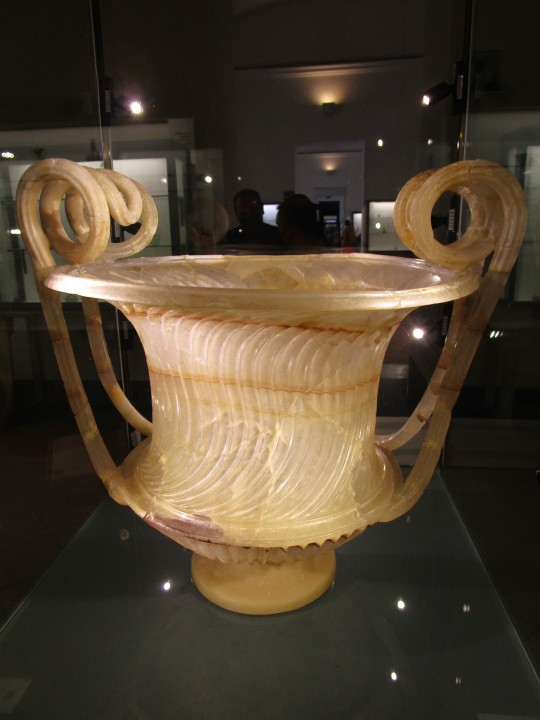
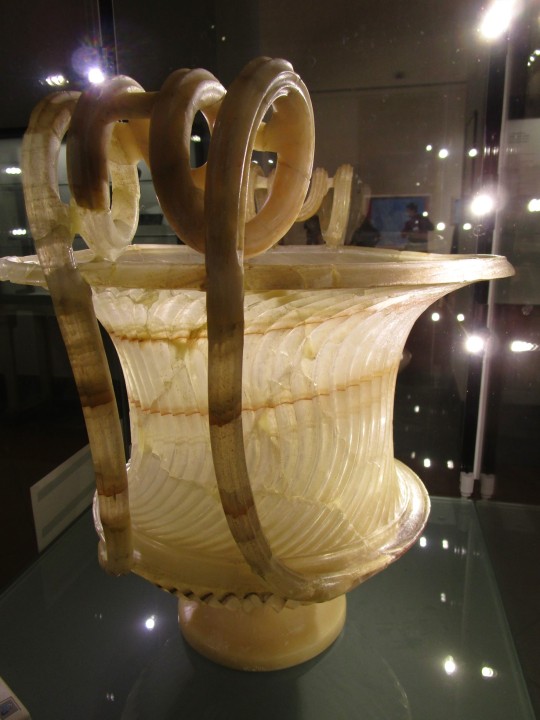
Alabaster Krater made during the reign of Augustus, 27 BCE to 14 CE, found in Santa Maria Capua Vetere, Campania, Italy
National Archaeological Museum of Naples
Photos by Charles Reeza
34 notes
·
View notes
Text
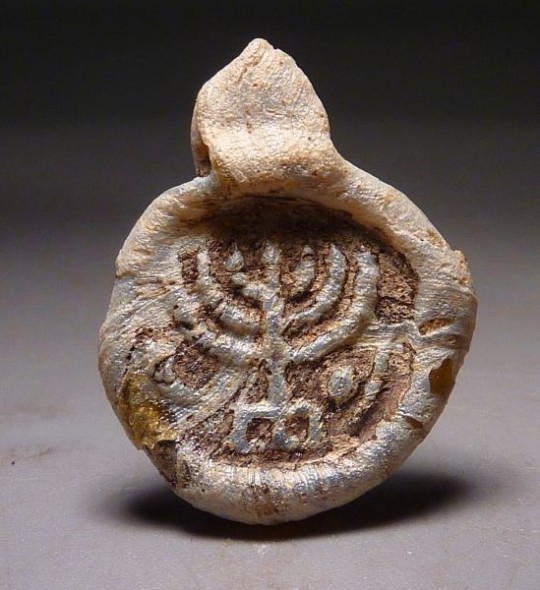
Jewish Menorah Glass Amulet | 4th - 7th Century AD
7 notes
·
View notes
Text
Author: Sonja Anderson Publication: Smithsonian Magazine Timestamp: January 22, 2024
Extract:
Researchers have long been puzzled by the Roman dodecahedron. More than 100 of these strange 12-sided metal objects have been found throughout Europe—but their purpose remains unclear. Now, another discovery in England’s countryside has reignited the mystery surrounding the ancient artifacts.
[...]
“[Dodecahedrons] are one of archaeology’s great enigmas,” [Richard Parker, secretary of the Norton Disney History and Archaeology Group] says.
“Our example is remarkable. It’s in an excellent condition—considering it’s been buried for 1,700 years—and complete with no damage.["]
[...]
The hollow, grapefruit-sized object is made of copper alloy, as the Norton Disney group writes on its website. Its 12 flat sides are punctuated by circular cut-outs and studs on each corner.
According to the group, the discovery brings the number of dodecahedrons unearthed in Roman Britain to 33, while about 130 have been discovered throughout the Roman Empire’s northwest provinces. [The dodecahedron discussed in the article] stands out because it’s still in one piece, while many of the others were found fragmented or damaged.
[...]
Some Roman dodecahedrons date to as early as the first century C.E. However, no visual or textual references to the objects have been found in historical records. [...]
“Nobody knows for certain how the Romans used them,” wrote Smithsonian magazine’s Sarah Kuta last year. “Some theories are that they functioned as measuring devices, calendars, ornamental scepter toppers, weapons or tools.”
[...]
[...] the group agrees with experts who think dodecahedrons were used for ritualistic or religious purposes. [...] researchers at Belgium’s Gallo-Roman Museum have hypothesized that Romans used the objects in magical rituals, which could explain dodecahedrons’ absence from historical records: With the Roman Empire’s eventual embrace of Christianity came laws forbidding magic. Practitioners would have had to keep their rituals—and related objects—a secret.
/end of extract
"12-sided Roman relic baffles archaeologists, spawns countless theories"
Author: Leo Sands Publication: The Washington Post Timestamp: April 30, 2024 at 11:09 a.m. EDT
Extract:
“One reason that it is so captivating for the public is that it’s hard to believe that we have anything from the Roman period that we don’t know what it’s for,” Lorena Hitchens, an archaeologist specializing in Roman dodecahedrons[...] “It’s very tempting to want to solve that mystery.”
[...]
Internet sleuths have joined the speculation [...] with many gravitating toward an explanation that revolves around their use as tools. [...] knit and crochet pattern designer Amy Gaines posits [...] that dodecahedrons may have been used to knit gold chains, constructing a 3D-printed replica to demonstrate her theory.[...] English Heritage lists theories ranging from a tool for finding the best date to sow grain, to functioning as a candleholder, a polygonal die, a range finder, a surveying instrument, or a way of knitting gloves.
But academic archaeologists shy away from the suggestion that they were practical objects used as everyday tools. “I know that because I’ve examined a lot of them, and they don’t have the kind of use wear you’d expect from a tool,” Hitchens said.
“They’re also much more delicate than people realize,” she said. “They would be broken very quickly.”
[...]
The most popular theory among academic experts [...] is that dodecahedrons held religious or ritual meaning, linked in some way to local practices on the Roman Empire’s fringes.
Proponents of this theory [...] point to the intricacy of the object itself, suggesting it probably had special value. According to Hitchens, the relic was made using a lost-wax bronze-casting process, an extremely technical feat — made even more challenging by the fact that the final product was hollow. [...]
/end of extract
#Smithsonian#Washington Post#archaeology#archaeological discoveries#ancient rome#roman britain#roman dodecahedron#dodecahedron#ancient artifact#academic theories#Norton Disney History and Archaeology Group#Roman Empire#ritualistic#no consensus as of yet#antiquity#ancient artefacts#ancient artifacts#roman empire#archaeological news#field archaeology#article#articles
2 notes
·
View notes
Text

Writing Prompt #28 The Orb of Time
[In 2082, a team of human colonizers on a distant planet uncover a mysterious ruin of a long-lost alien civilization. As they explore, they discover a dangerous artifact called the Eve Orb that has the power to control time itself. They face a moral dilemma. Keep it or destroy it.]
Write a short story based on the writing prompt. Challenge your writing abilities and see where your imagination takes you.
#writing prompt#writing#writers on tumblr#dialogue prompt#story prompt#story inspo#story ideas#creative writing prompt#creative writing inspo#creative writing ideas#original prompt#daily prompt#daily writing prompt#writing challenge#image prompts#fiction writing#fiction#sciencefiction#planet#space#time travel#time#morality#moral paradox#moral dilemma#orb#ancient artifact#ancient ruins#alien technology
2 notes
·
View notes
Text

Heron monument at Dusty Scrubs National Park (photo 2023).
#archaeology#frogs#birds#fantasy#history#culture#nature#critters#worldbuilding#national parks#monument#ancient artifact#artifacts#prehistoric#educational#research#desert#landscape#sunset#heron#fishing
3 notes
·
View notes
Text


Giant Viking Runestone Found Under kitchen Floor in Denmark
A Couple Renovating Their Kitchen in Denmark Found an Ancient Stone Carved With Viking Runes
The stone may be one of the oldest and rarest of its kind, and is now being studied by experts.
When Lene Brandt and her husband, Anders Nielsen, were preparing to tear up the linoleum floors in the kitchen in their home in the village of Mosekær, in Denmark, they probably expected the normal things that occur in the course of such a project: cost overruns, delays, and problems with contractors.

Instead, what they found was an ancient artifact. The couple stumbled across a nearly 2,000-pound stone, measuring more than six feet long, carved with ancient runes. The couple contacted local experts at the Museum Østjylland. Staff archaeologist Benita Clemmensen is quoted by the cultural news site Skjalden saying that these stones are the sole written records of the Viking Age.
Five runes can be found carved into the stone’s surface, reading “aft Bi,” which can be translated as “after B.”
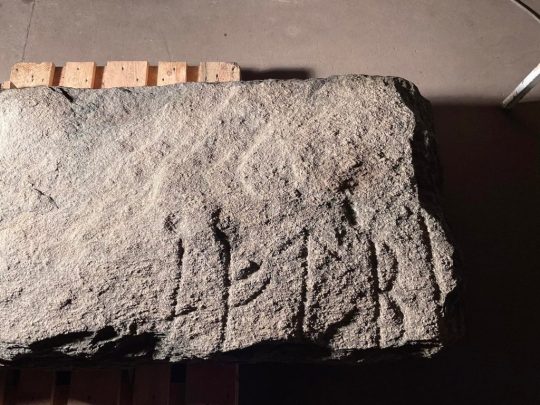
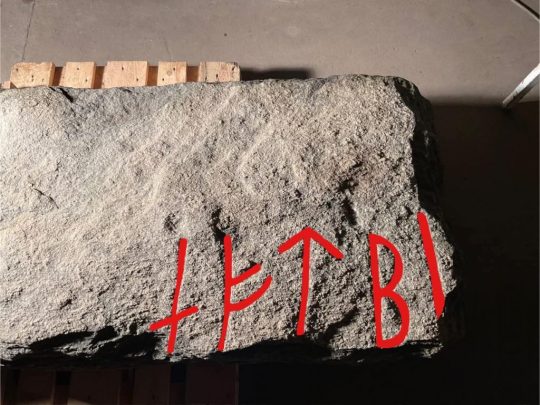
“The Mosekær stone is probably to be dated to the eighth or nineth century because of the formula ‘After… ‘, i.e. ‘In memory of’, placed in the beginning of the text,” senior researcher and runologist Lisbeth Imer, with the National Museum of Denmark, Copenhagen, tells Artnet News. “It correlates with an eighth-century runestone on Fyn, the Flemløse stone with the text ‘After Hróðulfr stands this stone; he was… priest/chief. Sons placed in memory. Ávarr coloured.’
“It most likely is one of the oldest runestones in Denmark,” she says.
The museum has dubbed the stone a treasure, meaning it legally belongs to the state.
New rune stones are found only every five or 10 years, Imer says, “so it is a rare find.”
Imer tells Skjalden that only about 20 rune stones from the eighth century have been discovered in Denmark. These early stones are very significant, as there are approximately 200 known Viking Age rune stones (dating from the 700s to the 900s) throughout the country. Norse literature is dense with references to runes, which may have served as magical signs to be used in charms.
The area where this rune stone was found has proven particularly rich for archaeologists, yielding some 44 such artifacts.

#Giant Viking Runestone Found Under kitchen Floor in Denmark#vikings#runestones#ancient artifact#archeology#archeolgst#history#history news#ancient history#ancient culture#ancient civilizations#viking age#viking history
255 notes
·
View notes
Text

"Fascinating," Bodhi murmured as he peered at the glowing figurine. Less than a foot tall, jade green save for the warm glow from within, this was apparently what the snow leopard mage had been searching for: an artifact from long ancient times, designed to sustain a mage through long rituals. "According to those old texts, this should be able to fill anyone with limitless energy …"
Mere moments later, he discovered to his chagrin what that actually meant.
#luprand art#furry art#fat furry#snow leopard#mage#ancient artifact#magic idol#instant weight gain#risqué
4 notes
·
View notes
Text

Sumerian/Mesopotamian Amulet Seal in the Form of a Bull, c. 3250 BCE.
#history#archaelogy#artifacts#art history#old art#art#statue#ancient history#bronze age#iron age#neolithic#mesopotamia#sumerian#iraqi#historical#cute#ancient civilizations
13K notes
·
View notes
Text
In the realm of Elaris, a mighty sorcerer named Alaric found an apprentice in the humble and curious Yara. One fateful day, a life-changing event occurred when they discovered an ancient artifact in the depths of the Forbidden Forest. The artifact granted them power beyond their wildest dreams, transforming Yara into a powerful sorceress. Together, they learned to wield their newfound magic, becoming legends in the land and forever changing the course of Elaris' history. In this short tale, we have explored themes of transformation, mentorship, and the importance of embracing change.
0 notes
Text
A 4500-year-old statue of a dancing girl from what was the then-major city of Mohenjo-Daro, in what is now Pakistan.

2 notes
·
View notes